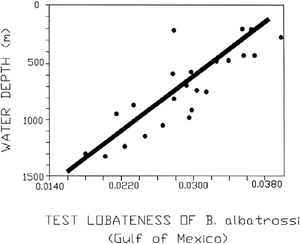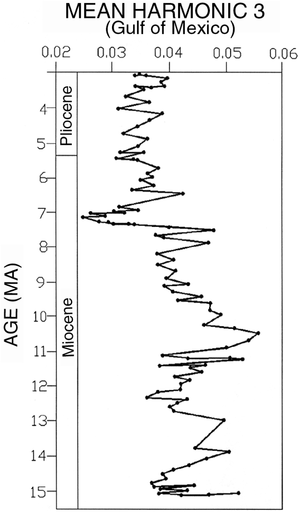Morphometric and particle analysis
| Exploring for Oil and Gas Traps | |

| |
| Series | Treatise in Petroleum Geology |
|---|---|
| Part | Predicting the occurrence of oil and gas traps |
| Chapter | Applied paleontology |
| Author | Robert L. Fleisher, H. Richard Lane |
| Link | Web page |
| Store | AAPG Store |
Evolutionary change within fossil lineages and the morphologic (i.e., size and shape) adaptation of fossil species to different ancient environments can only be inferred from morphologic analysis of fossil populations.[1] Until the early 1970s the morphologic study of microfossils involved tedious “eyeball” measurements of large numbers of specimens from many samples, precluding use of the technique in industrial application. Rapid advances in computer, video, and multivariate statistical techniques have greatly reduced the time required to collect quantitative measurements on large numbers of shells.
Morphometric procedure
Morphometric analysis involves collecting the measurements of two or three dimensions of fossil form, typically either an outline (silhouette) or the coordinate positions of a morphologic “landmark.” Once a sufficient data set is collected, multivariate methods are used to break out fossil “shape components” statistically and to relate component variability to chronostratigraphic or paleoenvironmental indices.[2] When the relationship between change in fossil shape and environmental and stratigraphic data is established, fossil morphology can increase confidence in geologic correlation and paleoenvironmental inference.[3][4]
Applications
Morphometric analysis of microfossils from stratigraphic sections can augment the resolution of existing biostratigraphic zonations.[5] The illustration to the right shows changes vs. age in the average morphometrically defined shape of tests in populations of the planktonic foraminifera Globoquadrina altispira.
Data for the illustration were compiled from cores taken in the DeSoto Canyon area, eastern Gulf of Mexico. Significant shifts in shape (such as at 7.5 Ma) can augment the resolution of existing biostratigraphic zonations. In addition to analysis from stratigraphic sections, refined paleoenvironmental interpretations can be obtained by comparing morphometric results from fossil populations (e.g., benthic foraminifera) with results obtained from analysis of existing species from known environments.
Systematic changes vs. water depth
The illustration below shows systematic changes vs. water depth in the outline shape (lobateness) of the benthic foraminifera Bolivina alhatrossi as defined by morphometric analysis. Data for this illustration were collected from a transect of bottom samples from the present-day Gulf of Mexico. Similar analyses of B. alhatrossi specimens from Neogene sections can be compared with the modern relationship to obtain paleobathymetric estimates.

Particle analysis
Particle analysis involves computer-assisted automated measurement and classification of size and color information of fossils and outline shape. To date, analysis of particle images has been applied largely to kerogen particles in transmitted, reflected, and fluorescent light. The results show promise for interpreting paleoenvironments, identifying source rock intervals, estimating thermal maturity of sediments, and refining biostratigraphic correlation.
See also
- New directions for biostratigraphy
- Quantitative biostratigraphy
- Stable isotope stratigraphy
- Molecular fossils
References
- ↑ Scott, G., H., 1980, The value of outline processing in the biometry and systematics of fossils: Palaeontology, vol. 23, p. 757–768.
- ↑ Davis, J., C., 1986, Statistics and data analysis in geology: New York, John Wiley, 646 p.
- ↑ Reyment, R., A., Blackith, R., E., Campbell, N., A., 1984, Multivariate Morphometrics, 2nd ed.: London, Academic Press, 233 p.
- ↑ Rohlf, F., J., Bookstein, F., L., eds., 1990, Proceedings of the Michigan Morphometrics Workshop: University of Michigan Museum of Zoology Special Publication 2, 380 p.
- ↑ Reyment, R., A., 1980, Morphometric methods in biostratigraphy: London, Academic Press, 168 p.
- ↑ Gary, A., C., Healy-Williams, N., Ehrlich, R., 1989, Water–mass relationships and morphologic variability in the benthic foraminifer Bolivina albatrossi Cushman, northern Gulf of Mexico: Journal of Foraminiferal Research, vol. 19, no. 3, p. 210–221., 10., 2113/gsjfr., 19., 3., 210
